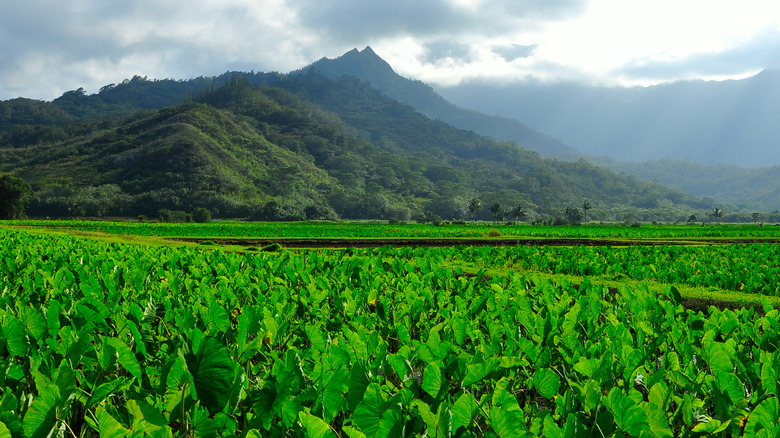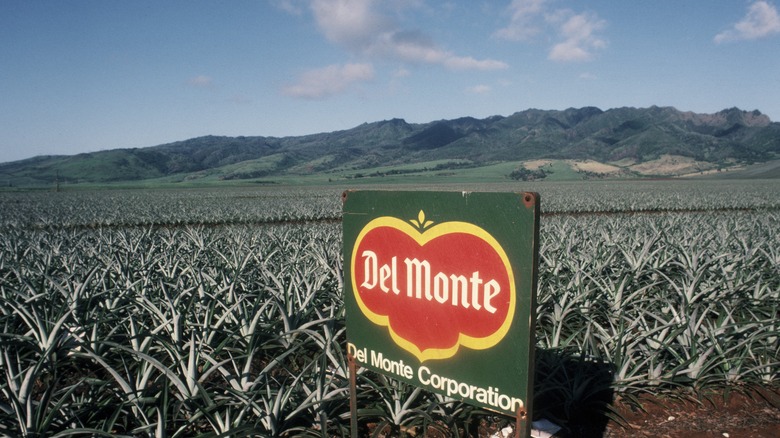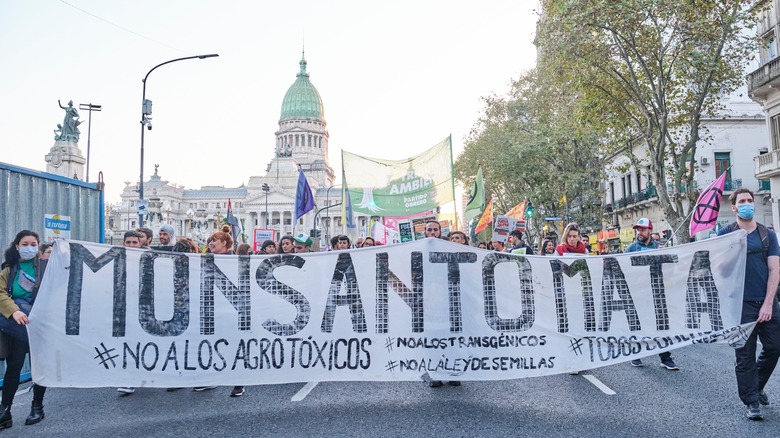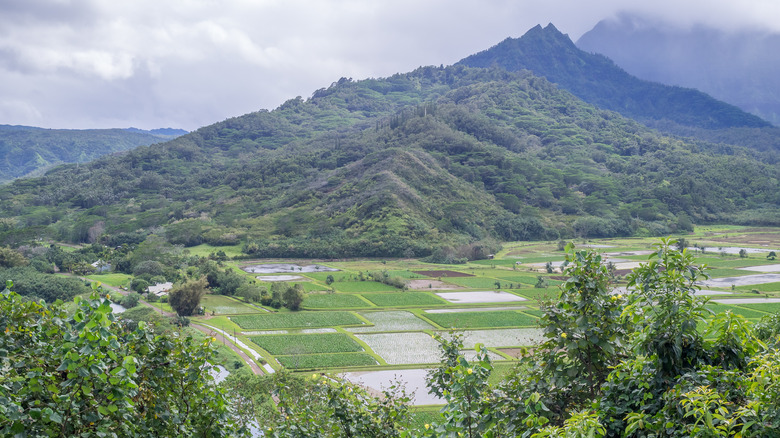How GMO Research Has Damaged Hawaii's Agriculture
The ongoing effects of the COVID-19 pandemic have sent shock waves through the global industrialized food system. Island communities in Hawaii, which the U.S. Department of Commerce says rely on imports for 85-90% of their food supply, have been particularly shaken. Not only did the global pandemic exacerbate the island state's food insecurity issues, but it brought more attention to the locals' struggle for self-sufficiency.
Autumn Ness, program director of anti-GMO non-profit Beyond Pesticides, told The Guardian, "What's stopping Hawaii feeding its own people is not lack of knowledge or skills, it's the power structure..."
The outlet explains that industrial agriculture and foreign capital's dominance across the islands of Hawaii have left traditional Hawaiian farmers with strangled access to land and water. What was once a state of subtropical biodiversity, diverse ecosystems, and distinct microclimates that were cared for through indigenous farming practices, has become the GMO research capital of the world, per Scientific American. Uncoincidentally, Hawaii is known amongst researchers as the "extinction capital of the world," as the home to a third of the species on the endangered species list (via Center for Biological Diversity).
The history of big agriculture in Hawaii
Prior to its colonization in the 18th and 19th centuries, Hawaii was an island of thriving forests that provided an abundance of food and medicine to the indigenous community. Traditional farming practices were built on a sustainable relationship between people and land that was guided by the 30 lunar phases of the Hawaiian calendar (via The Guardian). Today, Hawaiian farmers use their generational knowledge of sustainable farming mixed with modern technology to tend the land in areas like the Kona Coffee Belt, in hopes of counteracting the damage that big agriculture has made to Hawaii's landscape. However, of the 7,000 farms in Hawaii, only 100 are big enough to sell in grocery stores (via Civil Beat).
Meanwhile, four of the big pesticide and GMO firms currently operating on the Hawaiian islands control 60% of the global seed market, and 76% of pesticide sales, according to the Guardian. What began with pineapples and sugar cane, has evolved into monocropping plantations with research fields running thousands of trials to experiment with genetically modified corn, soybean, wheat, potatoes, and more (via Scientific American). Not only does the practice of monocropping itself have detrimental effects on the environment — destroying biodiversity and stripping the soil of nutrients — but the use of herbicides raises questions about potential health risks for the surrounding communities, farm workers, and their families.
The effects
In 2021, Monsanto, the agrochemical and agricultural biotechnology company that produces Roundup, a glyphosate-based herbicide, plead guilty to a total of 30 different environmental crimes (via Civil Beat). Described as "a serial violator of federal environmental laws," by U.S. Attorney Tracy Wilkison in a statement to the Department of Justice, Monsanto, now owned by Bayer, is just one of a handful of seed companies that have spent decades operating in Hawaii. As an industry, there have been billions of dollars spent in settlements for thousands of crimes against the environment and their products' related health effects.
The presence of these corporations has not only made work more challenging for small farmers through soil degradation and access to land but they've also created a perceived dependence that has prevented systemic change; as a prime example, GMO companies often cite their role in saving the Hawaiian papaya (via Modern Farmer), a fruit that the Center for Food Safety says makes up less than 0.001% of GMO crops in Hawaii, while mainland plants like corn and soybeans account for 90%. These companies also tout their efforts to produce more nutritious and disease-resistant crops, but the Center for Food Safety, says permits reveal these crops are overwhelmingly grown to test herbicide resistance.
To further debunk their argument, a 2019 study published in the journal Nature Sustainably found that pre-colonial food production in Hawaii could have produced as much food as current conventional farming, and could do so in the future even with less available land, suggesting that Hawaii could use native farming practices to provide food security. Despite these conclusions, companies convince lawmakers that, without them, Hawaiian agriculture would crumble to disease and pests (via Modern Farmer). In response, anti-GMO movements have surged in Hawaii as the government's resistance to holding companies like Monsanto accountable becomes more apparent.
The fight for self-sufficiency
In 2019, after using banned pesticide sprays and illegally storing hazardous waste in Maui, Monsanto was issued a $10 million fine, which pales in comparison to the company's $60 billion valuation as of 2017. Federal governments have a history of siding with the seed industry, and even denied Hawaiian counties the right to regulate GMOs in 2016 (via Civil Beat). A few years later, in 2019, the Hawaiian Legislature passed a bill to curb pesticide experimentation in areas where schools, hospitals, and elderly homes were present — however, it was quickly amended and limited to just schools during school hours with a buffer zone of 100 feet.
Today, more than 27 schools in Hawaii are located within a mile of a testing field using pesticide sprays — in some cases up to 16 times a day — although exposure to these chemicals is linked to a host of health problems in children (via the Center for Food Safety). On top of all this, despite operating more than 1,000 test sites in the state, these companies provide less than 0.5% of the total jobs in Hawaii (via the Center for Food Safety).
For now, it seems that big agriculture will continue to abuse the land and people of Hawaii while giving little in return. Until these companies are adequately reprimanded, local organizations will have to fight to achieve food security through self-sufficiency, but despite the learned risk, the state still allocates just 1% of its budget to agriculture (via Maui News). Until policies that encourage local farmers and support their growth are put in place, Hawaii will remain susceptible to natural disasters, like the pandemic, that have the potential to cut off their food supply.



